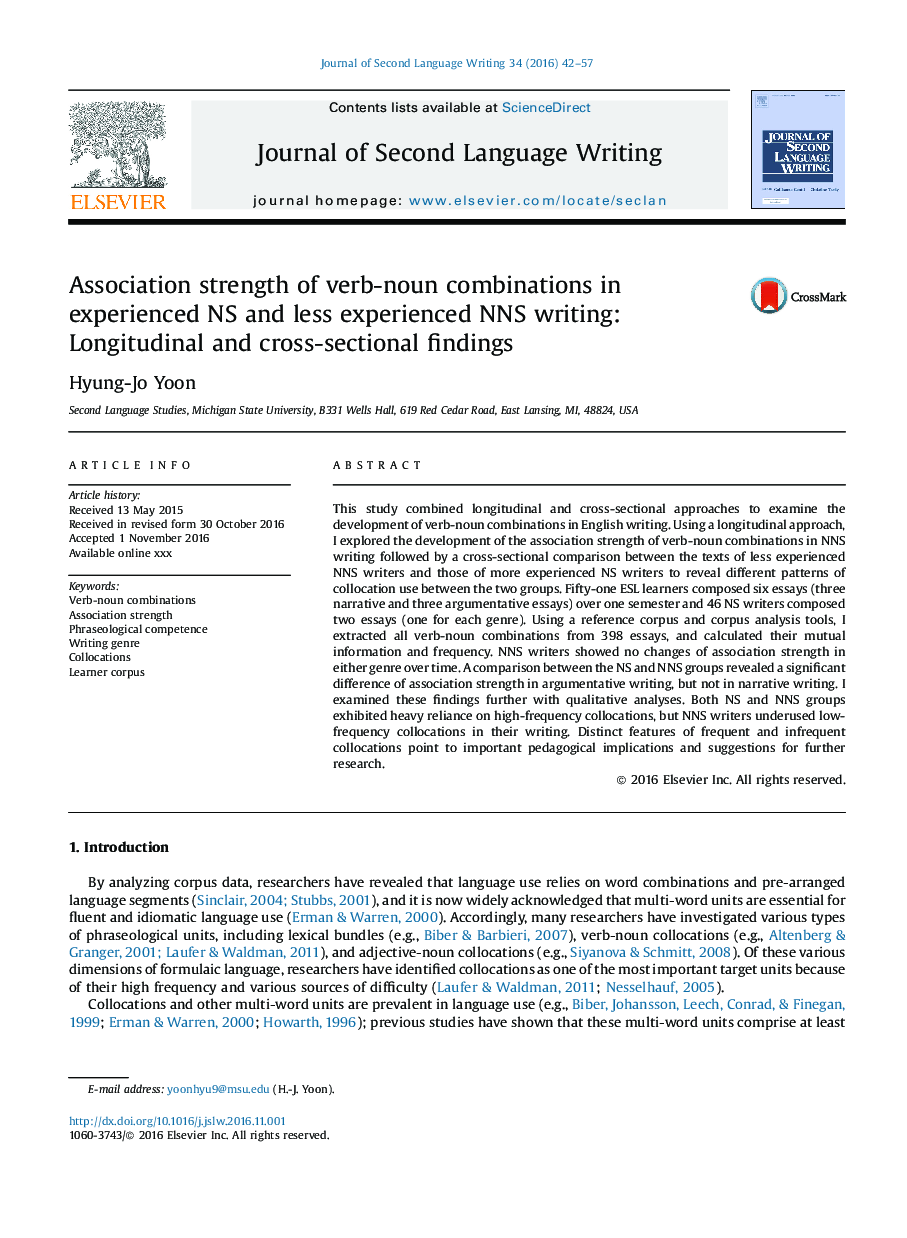| Article ID | Journal | Published Year | Pages | File Type |
|---|---|---|---|---|
| 4939843 | Journal of Second Language Writing | 2016 | 16 Pages |
Abstract
This study combined longitudinal and cross-sectional approaches to examine the development of verb-noun combinations in English writing. Using a longitudinal approach, I explored the development of the association strength of verb-noun combinations in NNS writing followed by a cross-sectional comparison between the texts of less experienced NNS writers and those of more experienced NS writers to reveal different patterns of collocation use between the two groups. Fifty-one ESL learners composed six essays (three narrative and three argumentative essays) over one semester and 46 NS writers composed two essays (one for each genre). Using a reference corpus and corpus analysis tools, I extracted all verb-noun combinations from 398 essays, and calculated their mutual information and frequency. NNS writers showed no changes of association strength in either genre over time. A comparison between the NS and NNS groups revealed a significant difference of association strength in argumentative writing, but not in narrative writing. I examined these findings further with qualitative analyses. Both NS and NNS groups exhibited heavy reliance on high-frequency collocations, but NNS writers underused low-frequency collocations in their writing. Distinct features of frequent and infrequent collocations point to important pedagogical implications and suggestions for further research.
Related Topics
Social Sciences and Humanities
Arts and Humanities
Language and Linguistics
Authors
Hyung-Jo Yoon,
